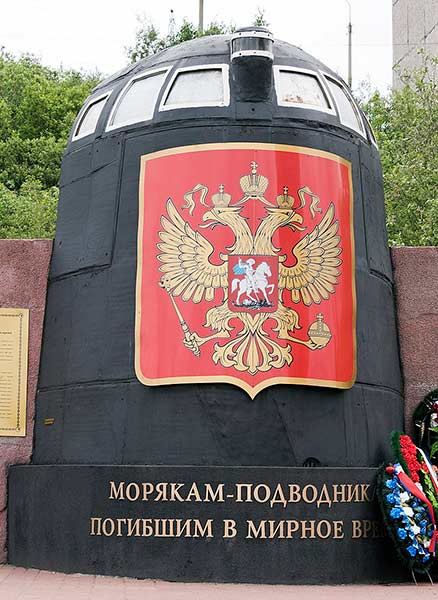By Eric Draper / Wikimedia Commons / CC-BY-SA-3.0 / GFDL
1 – Bush wins Controversial U.S. Presidential Election
The 54th U.S. presidential election was held on 7 November 2000, pitting Republican candidate George W. Bush against Democratic nominee Al Gore, the incumbent vice president.
It is considered one of the closest elections in US history, which hinged on the state of Florida, where the margin of votes was so close it required an automatic recount.
A series of legal battles ensued before the contentious 5–4 Supreme Court decision of Bush v. Gore on 12 December. The end of the recount saw Bush winning by 537 votes or a margin of 0.009%.
Gore had won the popular vote by over 540,000 votes, but Bush won 271 electoral votes, one more than the required majority of 270.
The first person since Grover Cleveland in 1888 to win the popular vote but lose in the Electoral College.
A consortium of major U.S. news organizations sponsored the National Opinion Research Center (NORC) to conduct a comprehensive review of 175,010 ballots.
Known as the Florida Ballot Project, these ballots were collected from the entire state, not just the disputed counties.
Based on the NORC review, the media group concluded that if the validity of all the ballots in question had any uniform standard applied, the electoral result would have been reversed and Gore would have won by 60 to 171 votes.
2 – The Kursk Submarine Disaster

The sinking of the Kursk nuclear-powered submarine took place in the Barents Sea on 12 August 2000. All 118 personnel on board were killed in the incident.
During the first major Russian naval exercise since the fall of the Soviet Union, the Kursk, reputedly unsinkable, was conducting a torpedo training launch.
However, during the course of the launch, there were two explosions in quick succession, with the second, larger, explosion registering 4.2 on the Richter scale as far away as Alaska.
The Russian Navy, not realizing it had sunk, did not begin a search for another six hours. The sub’s emergency rescue buoy was intentionally disabled, meaning it took more than 16 hours to find its location.
The Navy’s response was criticized as slow and inept, failing in four attempts to attach diving bells and submersibles to the escape hatch. The government refused help from other governments while manipulating the news media.
It was only after five days Russian President Vladimir Putin authorized the navy to accept British and Norwegian offers of assistance.
Seven days after the disaster, Norwegian divers opened a hatch to the boat’s flooded ninth compartment, finding no survivors.
The official investigation concluded a faulty weld in the torpedo’s casing leaked high-test peroxide, causing the torpedo’s kerosene fuel to explode, which ignited an intense fire.
The bulkheads between the first three compartments collapsed, a hole was torn in the hull, and everyone forward of the nuclear reactor in the fifth compartment was killed. Luckily, the nuclear reactors shut down safely.
Following salvage operations, analysts concluded that 23 sailors in the sixth through ninth compartments took refuge in the small ninth compartment and survived for more than six hours before a lack of oxygen suffocated the remaining survivors.
Families of the victims grew angry with the lack of information and demanded a meeting with newly elected President Vladimir Putin.
A video of the meeting was leaked to international media, shocking audiences with footage of a mother being forcibly sedated before being removed.
In October 2001, a Dutch team salvaged the wreck and recovered everything but the bow, including the remains of 115 sailors.
3 – Concorde Crash Kills 113 Near Paris

Air France Flight 4590 was an international charter flight from Paris to New York City flown by an Aérospatiale-BAC Concorde.
On 25 July 2000, the Concorde aircraft ran over debris on the runway during takeoff, blowing a tire and puncturing a fuel tank.
The subsequent fire and engine failure caused the aircraft to crash into a hotel in nearby Gonesse two minutes after takeoff.
The crash killed all 109 people on board and four people in the hotel.
The flight’s passengers were on their way to board the cruise ship MS Deutschland in New York City for a 16-day cruise to Manta, Ecuador. It was the only fatal Concorde accident during its 27-year operational history.
Concorde had been considered among the world’s safest airplanes, but the July 2000 crash ultimately contributed to the end of the aircraft’s career.
Shortly after the crash, all Concordes were grounded, pending an investigation into the cause of the crash. Concorde’s passenger numbers declined following the crash.
In 2003, after a slump in air travel following the September 11 attacks, Airbus decided to no longer supply replacement parts for Concorde. Air France’s final Concorde flight took place on 27 June 2003.
A monument in honor of the crash victims, consisting of a piece of transparent glass with a piece of an aircraft wing jutting through it, was dedicated at Gonesse.
4 – The Dot-com Bubble Bursts

The dot-com bubble was a historic economic bubble and period of excessive speculation primarily in the United States from 1995 to 2000, a period of extreme growth in the usage of the Internet.
The Nasdaq stock market index peaked in value on 10 March 2000, having risen 400% in the five years before crashing. The crash would last from 11 March 2000 to 9 October 2002.
During the crash, many online shopping and communication companies, such as Pets.com, Global Crossing, Boo.com, Worldcom, and NorthPoint Communications failed and shut down.
At the height of the bubble, it was possible for a promising dot-com company to become a public company through an IPO, raising substantial money even if it had never generated any material revenue.
By the end of the stock market downturn in October 2002, stocks had lost $5 trillion in market capitalization from their peak, with the NASDAQ-100 dropping 78% from its peak.
5 – The First Long-Term Crew on the International Space Station

Expedition 1 was the first long-duration stay on the International Space Station.
The three-person crew consisted of Bill Shepherd, an American, and two Russians, Yuri Gidzenko and Sergei K. Krikalev.
The three men stayed aboard the station for 136 days, from November 2000 to March 2001. This began an uninterrupted human presence on the station which has continued unabated as of Spring 2019.
The Russian spacecraft Soyuz TM-31, launched on 21 October, docking to the station two days later on 2 November 2000.
The crew carried out various tasks throughout the mission, which was declared a success.
The crew’s four and a half-month tour aboard the ISS officially ended on 18 March 2001, when Discovery undocked from the station, with the Expedition 1 crew landing back on Earth on 21 March 2001.
The station is expected to operate until 2030, with the development of the station continuing into 2019.
It is the largest human-made body in low Earth orbit and can often be seen with the naked eye from Earth.









